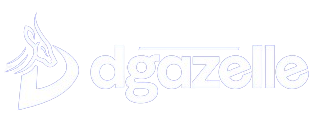What is Ad Personalization and How to Use?
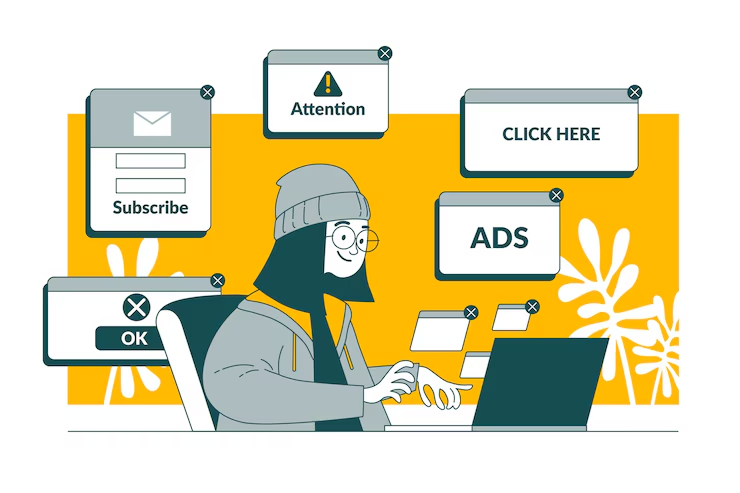
Ad personalization is the key to delivering useful, timely ads that connects with your audience. But then what exactly is it, and how can you use it effectively?
What Are Display Ads & How Do They Work?
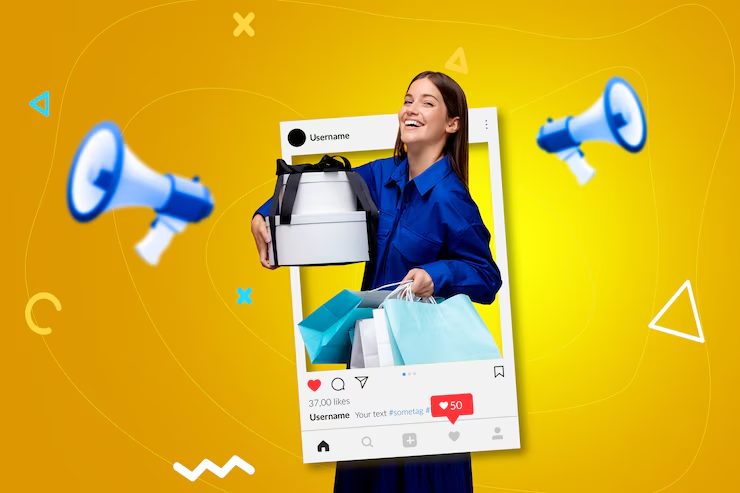
Display ads are a powerful tool for businesses to boost their visibility, reach new audiences, and drive results online. But what exactly are display ads, how do they work, and how can you make them work for your business? Here are simple ways you can make this happen.
Struggling with Sponsored Ads? Here’s What’s Going Wrong (And How to Fix It Fast)

Are you pouring money into sponsored ads but seeing little to no return? You’re not alone. Many Nigerian business owners face the same frustration: sponsored ads that drain budgets without delivering leads or sales. The good news? Most ad struggles come down to a handful of common mistakes that you can fix quickly with the right approach. Let’s break down why your sponsored ads might be underperforming, the most frequent errors Nigerian businesses make, and proven strategies to turn things around fast. Plus, discover how Dgazelle Digital can help you attract, engage, and monetize your ideal customers predictably and profitably. Why Sponsored Ads Fail for Nigerian Businesses Sponsored ads, whether on Google, Facebook, or Instagram offer powerful ways to reach new customers. But in Nigeria’s competitive digital landscape, simply running ads isn’t enough. Here’s why many campaigns flop: If any of this sounds familiar, you’re in the right place. Let’s dive deeper into the most common mistakes and how to fix them. The Most Common Sponsored Ad Mistakes (And How to Fix Them) 1. Targeting the Wrong Audience Many Nigerian businesses use broad or irrelevant targeting, hoping to reach “everyone.” This approach leads to wasted impressions and poor conversion rates. The Fix: 2. Weak or Generic Creative Stock images, bland headlines, and unclear calls-to-action (CTAs) won’t cut through the noise, especially in Nigeria’s vibrant market The Fix: Dgazelle Digital is here to help you attract, engage, and monetize your ideal customers, predictably and profitably. Ready to grow? Let’s build a campaign that actually delivers results. 3. Ignoring Local Context and Language Ads that feel foreign or out-of-touch won’t resonate. Nigerian consumers respond best to brands that get them. The Fix: 4. Sending Traffic to Poor Landing Pages Even the best ad will flop if it leads to a slow, confusing, or irrelevant landing page. The Fix: 5. Neglecting Data and Optimization Too many businesses set and forget their ads, missing out on valuable insights. The Fix: Proven Strategies to Boost Your Sponsored Ad ROI Start with Smart Keyword Research Craft High-Quality, SEO-Optimized Content Leverage Local SEO Dgazelle Digital is here to help you attract, engage, and monetize your ideal customers, predictably and profitably. Ready to grow? Let’s build a campaign that actually delivers results. Retarget and Nurture Your Leads Why Nigerian Businesses Trust Dgazelle Digital If all this sounds overwhelming, you’re not alone. Many business owners struggle to keep up with the fast-changing world of digital marketing and sponsored ads. That’s where Dgazelle Digital comes in. What Makes Dgazelle Digital Different? Ready to Fix Your Sponsored Ads? Here’s Your Next Step If you’re tired of wasting money on ads that don’t deliver, it’s time to take action: Frequently Asked Questions Q: How much should I budget for sponsored ads in Nigeria?A: Start small (₦10,000–₦50,000/month) and scale up as you see results. Focus on optimizing your campaigns for the best ROI. Q: Which platforms work best for Nigerian businesses?A: Facebook, Instagram, and Google Ads are the most popular. The best choice depends on your target audience and business goals. Q: Can Dgazelle Digital manage my ads for me?A: Absolutely! We offer full-service digital marketing, including ad management, web design, and business consultation tailored to Nigerian businesses. Conclusion Sponsored ads can be a game-changer for Nigerian businesses, but only if you avoid common pitfalls and focus on what works. By targeting the right audience, using compelling creative, and optimizing every step of your funnel, you’ll see better results fast. Don’t let another naira go to waste. Partner with Dgazelle Digital and watch your business grow. Contact Dgazelle Digital today and let’s turn your ad spend into real, measurable growth.
Email Isn’t One-Size-Fits-All, Turn Data into Dialogue with Better Email Segmentation
Email remains one of the most effective channels for reaching and engaging customers. Yet, if you’re blasting the same message to your entire list, you’re missing out on the true power of email and that is email personalization. The days of “one-size-fits-all” campaigns are over. To stand out in crowded inboxes and drive real business results, you need to turn data into dialogue through smart email segmentation. Let’s read on to find out why segmentation matters, how to do it right, and how it can transform your email marketing ROI. Plus, discover how our web design and digital marketing services can help you build a smarter, more profitable email strategy. Why “One-Size-Fits-All” Email Fails Modern Businesses Generic email blasts might have worked a decade ago, but today’s consumers expect more. Research shows that 80% of customers want personalized experiences from brands, and 56% unsubscribe from emails that feel irrelevant. If your emails don’t speak directly to your recipients’ needs, you risk being ignored—or worse, marked as spam. The Cost of Irrelevance Email segmentation is the solution to these problems. By dividing your list into targeted groups, you can send the right message to the right person at the right time turning data into meaningful dialogue. What Is Email Segmentation? Email segmentation is the practice of splitting your email list into smaller groups based on shared characteristics—such as demographics, behavior, purchase history, or preferences—so you can deliver content that’s relevant to each segment. Think of segmentation as moving from shouting in a crowded room to having one-on-one conversations. The result? More engagement, higher conversions, and stronger customer relationships. Want to see higher open and click rates? Discover how our web design and digital marketing experts can transform your email strategy today The Business Benefits of Email Segmentation Segmentation Strategies That Work There’s no single “right” way to segment your list. The best approach combines multiple data points for a nuanced, audience-centric strategy. Here are proven segmentation methods tailored for business owners: 1. Demographic Segmentation: Segment by age, gender, location, occupation, or income to tailor offers and content. For example, a retail brand might send different promotions to customers in cold vs. warm climates, or a B2B firm might segment by industry or company size. 2. Behavioral Segmentation: Track how subscribers interact with your brand—purchase history, website visits, email opens, and clicks. Reward your most engaged subscribers with VIP offers, or re-engage those who haven’t opened your emails in a while. 3. Psychographic Segmentation: Go beyond surface-level data to segment by interests, values, or attitudes. For instance, highlight eco-friendly products to sustainability-minded customers, or promote luxury items to those who value exclusivity. 4. Lifecycle Stage Segmentation: Not all customers are at the same stage. Welcome new subscribers, nurture leads, reward loyal buyers, and win back lapsed customers with tailored messaging at every step. 5. Purchase History & Content Preferences: Send recommendations based on what customers have bought or browsed. If someone purchased running shoes, follow up with related gear or exclusive content about running. 6. Engagement Frequency: Some subscribers want daily updates, others prefer weekly digests. Let users set their preferences, or segment based on observed engagement patterns to avoid overwhelming your audience1. 7. Micro-Segmentation for Hyper-Personalization: Take segmentation further by targeting ultra-specific behaviors—like cart abandoners, high-value customers, or users who clicked a specific link in your last campaign. The more relevant your message, the higher your results1. How to Implement Effective Email Segmentation Don’t let your messages get lost in the inbox. Contact us to create personalized, high-converting emails tailored to every segment of your audience. Common Segmentation Mistakes to Avoid Turning Data into Dialogue: The Human Side of Segmentation Segmentation isn’t just about numbers—it’s about building relationships. When you use data to understand your audience’s needs, preferences, and behaviors, your emails feel less like marketing and more like a conversation. This fosters trust, loyalty, and long-term value. Ready to turn your email list into your most valuable business asset? Let Dgazelle help you transform data into dialogue and drive real growth with smarter segmentation. Conclusion Email isn’t one-size-fits-all. It’s a dynamic, data-driven dialogue between your business and your customers. By embracing segmentation, you’ll send emails people actually want to read—boosting engagement, conversions, and loyalty. Don’t settle for generic campaigns or wasted marketing spend. With the right strategy and the right partner, you can unlock the full potential of your email list. Personalized communication isn’t the future of email—it’s the present. Start segmenting, start connecting, and watch your business grow.
Vanity Metrics: Are You Tracking What Truly Matters?
If your website pulls in loads of traffic each month, it’s tempting to think your business is thriving. But here’s the catch: traffic without meaningful conversions is just noise. As exciting as big numbers may look, they don’t always tell the full story or help you grow. Many startups and small business owners fall into the trap of tracking what’s easy instead of what’s effective. Metrics like pageviews, social media likes, and impressions feel good but often do little for your bottom line. In his article “Run Away from Vanity Metrics,” Ivan Bjelajac hits this nail on the head by reminding us that what we track shapes how we act. At Dgazelle, we believe real success lies in understanding the right data. That’s why our web design approach prioritizes clarity, user flow, and conversion—not just flashy numbers. What Are Vanity Metrics? Vanity metrics are numbers that may look good on paper but don’t impact your bottom line, growth, or strategic decision-making. They often inflate your sense of success without offering insight into what’s actually working. Most business owners understand that tracking results is essential to measuring success. But here’s where many go off track they start measuring the wrong things. It’s easy to download a shiny analytics tool or plug into a fancy dashboard that shows you numbers like user count, social shares, or monthly traffic. Feels great, right? Gives you a sense of control and progress. But be careful—that feeling can be deceptive. Metrics like “1 million pageviews” or “10,000 app downloads” look impressive but often don’t help you take meaningful action. They’re good for feeling awesome, but bad for decision-making. Even Monthly Recurring Revenue (MRR) can be misleading if you don’t understand why it’s growing or who your loyal customers are. At Dgazelle, we always ask: what action does this metric inspire? If it doesn’t tell a story or lead to a next step, it’s just vanity. And in business, vanity doesn’t pay the bills. How to Identify Vanity Metrics The simplest way to spot a vanity metric is to ask yourself: “So what?” If an increase in a metric doesn’t lead to a clear next step or business outcome, it’s likely vanity. For example, if your website traffic doubles but sales remain flat, the traffic increase is probably a vanity metric. Similarly, if your social media followers grow but engagement and conversions don’t, that follower count might not be meaningful. Another red flag is if a metric can be easily manipulated without improving your business—like buying followers or running ads that boost impressions but don’t generate leads. You’d be surprised how transformative a simple question—“Why?”—can be. In Aristotelian philosophy, the term cause refers to the explanation behind a “Why?” question. This principle is essential when making strategic business decisions. Too often, we make decisions based on surface-level data, without digging deeper into what truly drives those results. Let’s apply the 3 Whys to better understand the cause of your revenue: Now, instead of focusing directly on revenue, shift your focus to measuring the success rate of your feature. When you understand what drives your sales, revenue will naturally follow. The key is to look beyond vanity metrics and focus on actionable data. At Dgazelle, we help businesses identify what truly matters through data-driven web design and strategies, so you can stop guessing and start growing. Common Vanity Metrics and Why They Can Mislead You Many popular metrics fall into the vanity category if not interpreted carefully. Here’s a breakdown of some frequent offenders: 1. Impressions Why it’s vanity: Impressions tell you how many times your ad or content was displayed, but not if anyone cared or took action. When it matters: For brand awareness campaigns or retargeting strategies, impressions paired with engagement metrics can be useful. 2. Pageviews Why it’s vanity: More pageviews don’t guarantee conversions. Visitors might be bouncing or bots could inflate numbers. When it matters: Tracking pageviews on key conversion pages (pricing, checkout) and linking them to conversions can be insightful. Stop wasting time on vanity metrics. Lets work together and implement data-driven marketing strategies that attract qualified leads and maximize your ROI. 3. Site Traffic Why it’s vanity: Traffic spikes look good but mean little if visitors don’t engage or convert. When it matters: When traffic comes from high-intent sources like organic search for relevant keywords. 4. Time on Website Why it’s vanity: Longer time might indicate confusion rather than interest. When it matters: When combined with engagement signals like scroll depth or clicks on calls to action. 5. Bounce Rate Why it’s vanity: High bounce isn’t always bad; it depends on page purpose. When it matters: For product or landing pages, a low bounce rate is better. For blog posts, a high bounce might be normal. Here’s a refined version of that section, optimized for SEO and tailored to business owners, with a subtle pitch for Dgazelle’s services: Measure What Truly Matters For startups, it’s vital to track the right data to understand the true health of your business. Focus on metrics that genuinely guide decision-making and drive growth. Metrics like the number of visitors, subscribers, or followers may look good on paper, but if they don’t align with your goals, they’re just vanity metrics. Instead, concentrate on data that you can act on. For example, tracking page views without addressing a high bounce rate won’t improve user engagement. Similarly, having 10,000 followers who don’t engage with your content doesn’t contribute to your business goals. By measuring what truly matters, such as user interactions, conversion rates, and customer retention, you can make more informed decisions that will help your business grow. If you need help creating a data-driven website that focuses on metrics that matter, Dgazelle’s expert web design services can help optimize your site for better user experience and meaningful results. Metrics That Truly Matter for Your Business Growth To grow sustainably, focus on actionable metrics that guide decisions and tie directly to revenue and profitability. Click-Through Rate (CTR) CTR
What is Banner Blindness and How to Avoid It

Banner ads have long been a staple of online advertising, but if you’re a business owner relying on them to drive results, you may have noticed a troubling trend: people just aren’t clicking. In fact, most users don’t even see your banners. This phenomenon, known as banner blindness, is a big problem for digital marketers and business owners alike. But what exactly is banner blindness, why does it happen, and most importantly how can you overcome it? What is Banner Blindness? Banner blindness is a psychological phenomenon where website visitors consciously or unconsciously ignore banner ads and other display advertising on a webpage, even when those ads are bright, bold, and strategically placed. Studies show that up to 86% of users experience banner blindness, meaning the vast majority of your potential customers may never even notice your ads. This isn’t just about users skipping over parts of your copy or spending less time on your offers. In many cases, visitors automatically scroll past banners, often before the ad even loads, or they simply never look at the areas where banners typically appear. The result? Low click-through rates (CTR), poor return on ad spend (ROAS), and missed opportunities for engagement and conversion. Why Does Banner Blindness Happen? Understanding the root causes of banner blindness is the first step to overcoming it. Here are the primary factors: 1. Predictable Ad Placement: Most banner ads appear in the same locations across websites, at the top, in sidebars, or at the bottom. Users have learned to expect ads in these spots and instinctively ignore them, focusing instead on the content they came for. 2. Ad Clutter and Sensory Overload: Webpages overloaded with ads popups, banners, text ads create sensory overload. When faced with too many ads, users become annoyed or overwhelmed, tuning out advertising content entirely and focusing solely on the main content. 3. Visual Cues and Ad Style: Users are conditioned to recognize the typical look of ads: flashy colors, different fonts, or images with embedded text. Anything that visually stands out as an ad is likely to be skipped, regardless of its actual usefulness. 4. Irrelevant Content: Ads that aren’t relevant to the user’s needs or interests are quickly dismissed. If your targeting is too broad or your message isn’t personalized, your banners will be ignored. 5. Ad Fatigue: Seeing the same ads repeatedly across different sites leads to ad fatigue. Users become so accustomed to your banners that they tune them out entirely, causing CTR and conversion rates to plummet. 6. Cognitive Schemata: People develop mental frameworks for navigating websites. They know where to look for content and where to expect ads. This schema helps them filter out anything that doesn’t match their intent, including banners. Why Should Business Owners Care? Banner blindness isn’t just a nuisance, it can seriously impact your business: How to Avoid Banner Blindness: Proven Strategies The bitter truth is Banner blindness is inevitable. But understanding user behavior and applying smart design and targeting strategies, you can dramatically improve the visibility and effectiveness of your ads. 1. Experiment with Ad Placement: Don’t limit your banners to the usual spots. Test new placements—such as within content, between paragraphs, or after key sections—to catch users off guard and increase visibility45. 2. Reduce Ad Clutter: Less is more. Limit the number of ads on each page to avoid overwhelming your visitors. A cleaner layout not only improves user experience but also makes each ad more noticeable. 3. Use Native and Contextual Ads: Native ads blend with the surrounding content, making them less likely to be skipped. Contextual ads that match the topic or intent of the page are more relevant and engaging for users. 4. Improve Ad Creative and Design: Avoid generic, template-based banners. Invest in high-quality, visually appealing creatives that stand out without screaming “ad.” Use eye-catching images, concise messaging, and strong calls to action. 5. Personalize and Target Your Ads: Leverage data to show the right message to the right audience at the right time. Personalization increases relevance and makes users more likely to engage. 6. Make Ads Interactive: Interactive ads, such as quizzes, polls, or carousels invite users to engage rather than passively scroll by. This can increase both attention and conversion rates. 7. Limit Frequency and Rotate Creatives: Avoid ad fatigue by setting frequency caps and regularly updating your creatives. Showing the same ad too often leads to users tuning it out. 8. Optimize for Mobile: Mobile users are particularly prone to ad blindness due to smaller screens and higher ad density. Ensure your ads are mobile-friendly, well-placed, and not disruptive. 9. Write Compelling Headlines and CTAs: Your ad copy matters as much as your design. Use clear, benefit-driven headlines and strong calls to action that speak directly to your audience’s needs. 10. Monitor and Adjust Targeting: Continuously analyze your ad performance data. Refine your targeting based on which segments respond best, and don’t be afraid to experiment with new formats or placements. The Role of Web Design in Combating Banner Blindness A well-designed website is crucial for both user experience and ad effectiveness. Poorly designed sites with cluttered layouts or intrusive ads drive users away and exacerbate banner blindness. Professional web design ensures that your ads are integrated naturally, enhancing visibility without disrupting the user journey. Looking to maximize your ad revenue and user engagement? Dgazelle’s web design and digital marketing services are tailored for business owners who want results—not just impressions. Our team creates clean, conversion-focused websites that keep users engaged and make every ad count. Banner Blindness: Key Takeaways for Business Owners Conclusion Stop wasting money on ads no one sees. Whether you’re running your own campaigns or relying on publisher revenue, overcoming banner blindness is essential for digital success. With the right strategy and the right web design partner you can ensure your ads get noticed, your brand stands out, and your business grows. Let Dgazelle help you build a website and digital marketing strategy that defeats banner blindness and delivers real results. Contact us
What Is Bounce Rate and How to Improve Yours
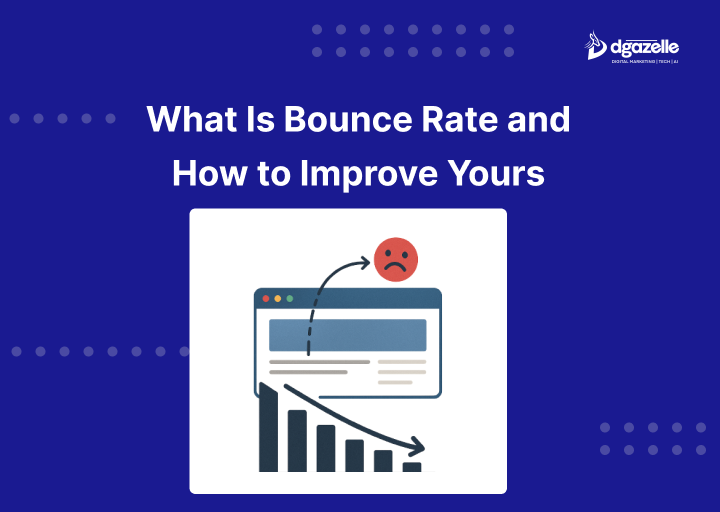
When it comes to understanding how your website is performing, bounce rate is one of the most telling metrics, but it’s also one of the most misunderstood. Simply put, bounce rate tracks the percentage of people who land on your website and leave without clicking on anything, filling a form, or spending more than a few seconds. In essence, it measures how many visitors didn’t engage with your site. Now, if you’re running a business in Nigeria whether it’s a service, e-commerce, or consulting brand, this matters. A high bounce rate might mean your website isn’t doing its job in keeping visitors interested or guiding them toward taking action. That’s a missed opportunity. A bounce happens when someone lands on a page, doesn’t scroll, click, or interact, and then leaves. It’s not the same as exit rate, which tracks when people leave a specific page but after possibly visiting others. Bounce rate gives deeper insight into your site’s initial impression and content effectiveness. And if you’re wondering how to create a site that keeps people exploring, well that’s where Dgazelle comes in. But more on that later. How Is Bounce Rate Calculated? Bounce rate is calculated by dividing the number of visitors who didn’t engage with your website by the total number of visitors during a specific period. For example, if 1,000 people visited your site in a month and 400 left without clicking or scrolling, your bounce rate would be 40%. Here’s the simple formula:Bounce Rate = (Unengaged Sessions / Total Sessions) × 100 For Nigerian business owners, this is more than just numbers. A high bounce rate might mean your homepage isn’t doing enough to pull people in or your site structure isn’t guiding visitors well. If that’s the case, your site could use a strategic upgrade—something we help businesses achieve every day at Dgazelle. What’s a “Normal” Bounce Rate? First off, let’s be clear—bounce rates aren’t one-size-fits-all. Different websites and even different pages within the same site will naturally have varying bounce rates. For instance, a contact page with just a phone number or address may have a high bounce rate—and that’s perfectly normal. The visitor came, got what they needed, and left. Similarly, blog articles tend to have higher bounce rates because people often skim, get value, and exit. That doesn’t always mean something is wrong. According to CXL’s data: Industry plays a role too—real estate sites average around 44.5%, while food and drink sites can hit up to 65.5%. For this data to make sense, you need to think about how these websites are used. Real estate websites have a much lower bounce rate because website visitors are likely browsing multiple properties before leaving the site. Restaurant websites offer quick bits of information, like location, hours, or menus, and don’t require as much clicking around or engaging with the content. CXL also discovered that bounce rate can differ based on the channel through which a website visitor landed on your site. For example, someone who found your site organically through search doesn’t have as high of a bounce rate as someone who landed on your site from a social media link. How to Improve Your Bounce Rate A high bounce rate is often a red flag that visitors aren’t connecting with your site. To reduce it, your website needs to be fast, easy to navigate, and offer value quickly. Here’s how to keep your audience engaged especially in a digital landscape like Nigeria, where attention spans are short and data is precious. 1. Speed Up Your Page Load TimeIn Nigeria, where internet speeds can vary widely, a slow-loading website is an engagement killer. If your site takes more than a few seconds to load, visitors are likely to bounce before it even finishes. Start by optimizing performance: 2. Optimize for Mobile UsersIn Nigeria, over 80% of internet access happens via mobile phones. If your website isn’t mobile-friendly, you’re losing potential customers by the minute. A mobile-optimized site isn’t a luxury, it’s a necessity. Here’s how to do it right: 3. Satisfy Search IntentThink about what your visitors are really looking for. If someone lands on your site through Google, but the content doesn’t match their needs, they’ll leave immediately hurting your bounce rate. For example, if your page promises “affordable property in Abuja” but only lists generic real estate tips, you’ve missed the mark. Every page on your website should clearly answer a question or fulfill a purpose. At Dgazelle, we help you plan your website content around real user intent so your audience finds what they’re searching for, stays longer, and trusts your brand more. 4. Focus on What’s “Above the Fold”Your website’s first impression is everything. What a visitor sees before they scroll, known as “above the fold” can either hook them or send them bouncing off. Nigerian audiences are quick to judge a site’s value, especially on mobile. To keep them engaged: The goal is to show your value immediately by designing high-converting hero sections that grab attention and guide users deeper into your site content right from the first glance. 5. Make Your Content Easy to DigestNobody wants to read endless text. If your site feels like a textbook, users won’t stick around. Nigerian users, especially those browsing on mobile, prefer skimmable, clean, and engaging layouts. Make your pages more reader-friendly with: We help brands turn boring layouts into dynamic, easy-to-navigate content experiences that hold attention and boost engagement, keeping bounce rates low and conversion rates high. Let’s chat 8. Add a Table of Contents Placing a table of contents at the top of each blog post immediately lets visitors know what they can learn by reading or make it easier for them to find the exact section they’re looking for. Plus, making your blog contents interactive helps to lower your bounce rate by letting readers click around to read the sections that interest them most. 9. Include a Call-to-Action Include buttons that lead users to take a desired action.
Pillar Pages, What Is It And How To Use It
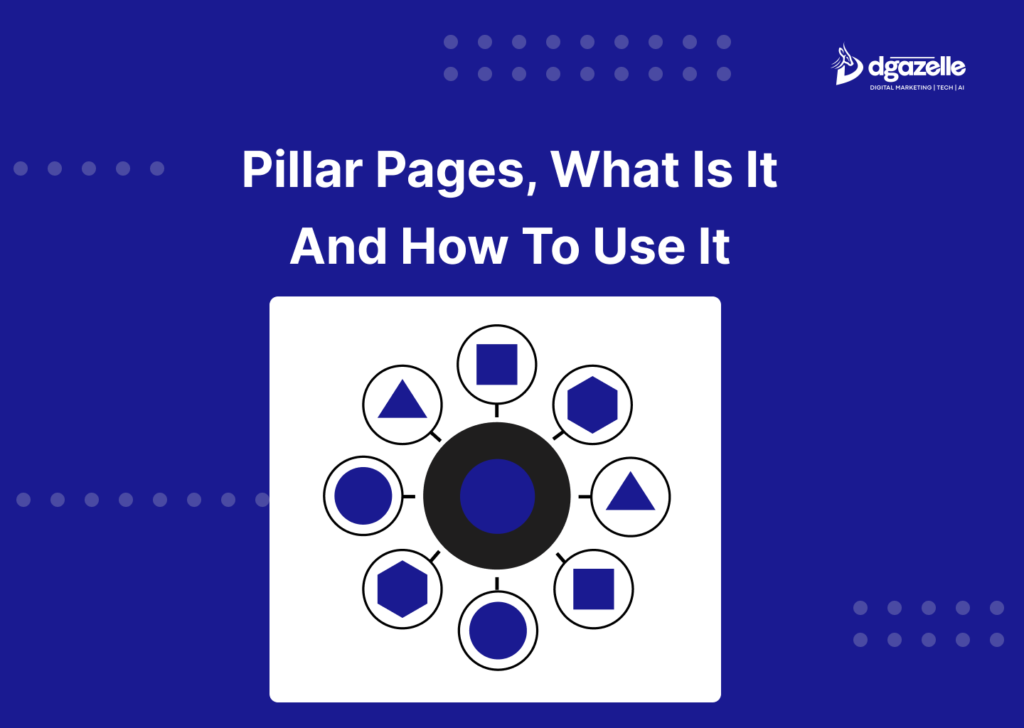
Ever felt lost in a sea of online content, struggling to find clear, structured information? That’s where pillar pages come in. A pillar page is a comprehensive, authoritative guide on a broad topic, serving as the foundation of a well-organized content strategy. It links to more specific, related content—known as topic clusters—making it easier for search engines to understand your site and for users to find exactly what they need. For Nigerian business owners looking to improve their website’s visibility and engagement, pillar pages can be game-changers. When done right, they can boost traffic, enhance user experience, and increase conversions. But if implemented poorly, they can actually harm your SEO. What Is a Pillar Page, Exactly? Think of a pillar page as the foundation of your content strategy, the main hub that connects and organizes related topics in a structured way. It’s a comprehensive guide that introduces key themes while linking to in-depth articles (topic clusters) for further exploration. More than just a content piece, a well-crafted pillar page enhances SEO by establishing context, relevance, and authority in search engines. When properly implemented, it boosts rankings, improves user experience, and keeps visitors engaged longer key factors for any Nigerian business looking to dominate its industry online. How Long Should a Pillar Page Be? Pillar pages are not your average blog post. They are in-depth, authoritative, and typically 2,000+ words long. But length isn’t the goal value is. These pages must cover a topic thoroughly, answering key questions while guiding users to more specific subtopics. However, a pillar page alone won’t cut it. Just like a bicycle’s wheels rely on spokes for stability, pillar pages draw their strength from supporting cluster content. Why Should You Use Pillar Pages? Pillar pages are essential because they make your website more organized, helping both search engines and users navigate your content seamlessly. A structured approach not only enhances the user experience but also improves your Google ranking. Google favors websites with logical hyperlink structures that clearly define content relationships. By strategically linking supporting articles to a central pillar, you signal relevance and expertise in your niche. Moreover, the more thoroughly you cover a topic, the stronger your authority. A well-executed pillar page positions your business as an industry leader, helping you attract and convert more customers online. How to Create an Effective Pillar Page Creating a pillar page isn’t just about writing, it’s about strategy. Here’s how to build one that ranks well and delivers value. Need help optimizing your website’s content structure? Dgazelle’s content experts craft high-ranking pillar pages that turn visitors into leads. Let’s build your authority! Step #1: Choose the Right Topics Start with keyword research. Tools like Ubersuggest, Google Trends, and AnswerThePublic help you find relevant topics and analyze competitor strategies. But don’t just rely on tools, listen to your audience. Use social media, surveys, and online forums to discover their biggest pain points and questions. Competitor analysis can also highlight content gaps, topics your competitors aren’t covering well, giving you an edge. Pro Tip: Refresh older content by turning it into a pillar page, expanding it with relevant subtopics for a stronger content structure. Lastly, stick with evergreen topics, ones that stay relevant long-term, so your effort keeps paying off. Step #2: Use Keyword Research to Organize Your Content Keyword research isn’t just about rankings—it’s about structuring your pillar page for clarity and relevance. Start by listing high-volume, business-relevant keywords using tools like Ubersuggest, Google Keyword Planner, or AnswerThePublic. Prioritize LSI (latent semantic indexing) keywords to improve search visibility. How Keywords Strengthen Your Pillar Page Take inspiration from Investopedia’s pillar page on home buying—it covers every angle, offers actionable steps, and links to supporting content. Want a powerful SEO strategy for your business? Dgazelle’s expert content team can structure your website for maximum visibility and engagement. Step #3: Create Your Pillar Page and Supporting Content Now that you’ve laid the groundwork, it’s time to build your pillar page and supporting content. Keep these best practices in mind: 1. Prioritize Quality and Readability Your pillar page isn’t just a content hub—it should be engaging and valuable on its own. Make it scannable with:Bulleted lists for key points, Short paragraphs to improve readability, Images and visuals to break up text, Logical structure with clear sections 2. Link Strategically 3. Follow Google’s E-E-A-T Principles Your content should reflect Experience, Expertise, Authoritativeness, and Trustworthiness to rank better and build credibility. Step #4: Build Backlinks to Your Pillar Pages You’ve created a solid pillar page, but your job isn’t done yet! Now, it’s time to amplify its reach through backlinks, one of the strongest SEO ranking factors. Start by auditing your current backlinks using Ubersuggest’s backlink checker to analyze the number of backlinks you already have, the domain authority of referring sites, and the spam score to avoid low-quality links. Once you have this data, focus on securing quality backlinks by reaching out to industry bloggers and relevant websites to feature your content, writing guest posts for high-authority websites with links back to your pillar page, and joining trusted business directories like Nigeria’s Chamber of Commerce. Conclusion A well-structured pillar page isn’t just a content piece, it’s a powerful SEO tool that enhances user experience, boosts authority, and strengthens link-building efforts. By organizing your content around pillar pages, you create a seamless navigation path for visitors while signaling relevance to search engines. This structure fills content gaps, improves engagement, and increases visibility in search results. Think of pillar pages as the backbone of your content strategy, the stronger they are, the more support they provide to your entire website. Ready to take your SEO game to the next level? Don’t just wait for customers to find you—put your brand in front of them! Let’s craft an outbound marketing strategy that drives results. Get a Free Strategy Session Today!
Outbound Marketing: How to Do It & Why It Matters
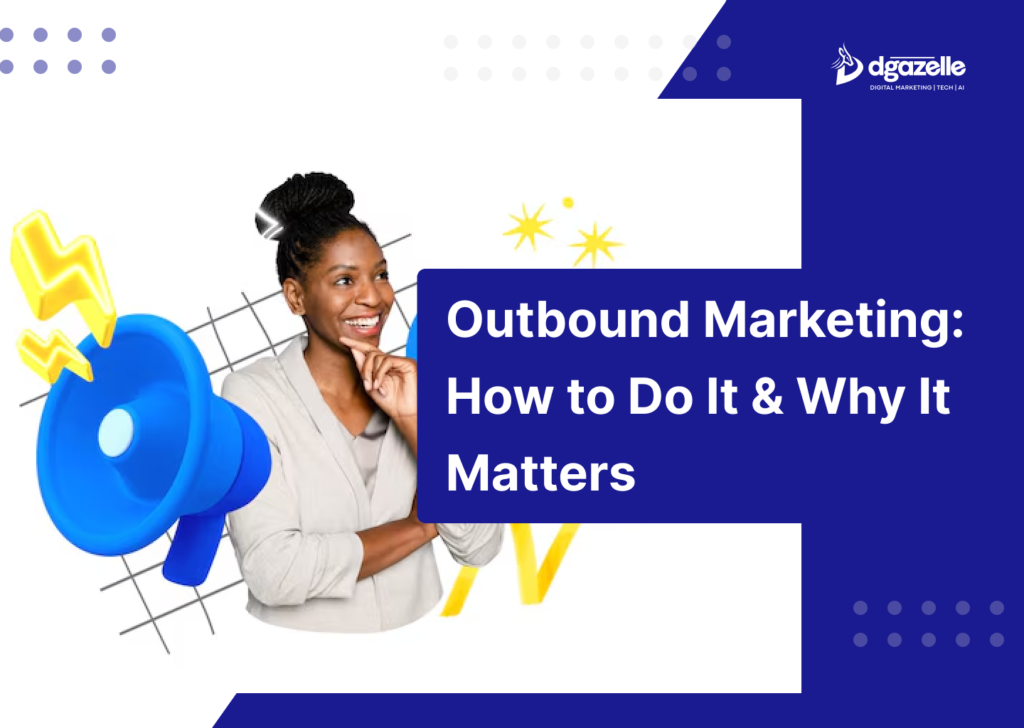
Outbound marketing is a proactive strategy where businesses reach out to potential customers rather than waiting for them to discover their brand. This includes traditional methods like TV commercials, radio ads, cold calls, and billboards, as well as digital approaches such as email marketing, influencer collaborations, paid social media ads, and retargeting campaigns. Unlike inbound marketing where customers find your business through content like blogs or SEO outbound marketing pushes your message to a broad audience, sometimes interrupting their daily activities. That’s why it’s often called “push marketing” or “interruption marketing.” However, when done right, outbound marketing helps businesses build brand awareness, engage the right audience, and drive sales. The key is strategic execution choosing the right channels, refining your message, and ensuring your brand appears in front of the right people at the right time. For Nigerian businesses, a well-crafted outbound marketing campaign, paired with a high-converting website can be a game changer. That’s where Dgazelle’s web design services come in. A well-optimized website makes your outbound efforts more effective by ensuring your ads drive traffic to a professional, high-performing online presence. Why Outbound Marketing Is Important Inbound marketing is powerful, but let’s be real—if people don’t know your product or service exists, they won’t search for it. Outbound marketing ensures your business gets in front of the right audience, whether they’re actively looking or not. Here’s why outbound marketing still matters for Nigerian businesses: For the best results, combine outbound efforts with a strong online presence. A high-converting, well-optimized website—like those crafted by Dgazelle—ensures that your outbound traffic turns into paying customers. Outbound Marketing Strategies Success in marketing isn’t about using just one strategy—it’s about a mix of tactics that help you reach your target audience at different touchpoints. Here are five outbound marketing strategies that can boost your brand’s visibility and customer engagement in Nigeria. 1. Cold Email Cold emails can feel intrusive, but when done right, they’re a powerful lead-generation tool. The key is personalization. Instead of generic pitches, craft emails that offer real value, address specific pain points, and show how your solution fits their needs. 2. Search Ads Paid search ads place your business in front of potential customers at the right moment. Whether it’s Google Ads or Bing Ads, search advertising delivers instant visibility, measurable ROI, and high-intent traffic to your website. 3. Social Media Ads With social media usage soaring in Nigeria, platforms like Facebook, Instagram, and TikTok offer cost-effective paid advertising. Since organic reach is declining, investing in social media ads ensures your brand stays visible, engages your audience, and drives conversions. From cold emails to paid ads, we create outbound campaigns that convert. Elevate your brand’s visibility and drive real growth. Start Your Campaign Now! 4. Outreach Marketing Reaching out to the right influencers, industry leaders, and media outlets boosts credibility and brand awareness. Whether it’s through email outreach, PR campaigns, or influencer partnerships, this approach helps build trust and authority in your industry. 5. Content Syndication Repurposing content on platforms like Medium, LinkedIn, and Quora extends your reach beyond your website. Paid syndication tools like Outbrain help push your content to larger audiences, maximizing visibility. Pro Tip: No matter which outbound strategy you choose, your website must be optimized for conversions. Dgazelle helps businesses create high-performing websites that turn traffic into customers. 6. Trade Shows & Events While digital marketing dominates today’s landscape, in-person events still hold value. Attending trade shows and industry events puts your brand directly in front of a highly targeted audience. For example, Nigerian businesses in real estate can leverage property expos, while tech startups can attend industry conferences to network and generate leads. To maximize ROI, track event metrics like footfall, lead capture, and conversions, then follow up with personalized emails. 7. Cold Calls Cold calling may seem outdated, but it remains effective. The key is shifting from pushy sales scripts to meaningful conversations. Strategies like SPIN selling—where you ask prospects structured questions to uncover their pain points—can improve success rates. 8. Traditional Media Advertising Despite the rise of digital marketing, TV, billboards, radio, and print ads still drive brand awareness. Nigerians still consume traditional media heavily, making it a great complement to online efforts. Pro Tip: Ensure your digital presence is strong. Dgazelle creates websites optimized for conversions, ensuring every outbound lead has a seamless experience. Merging Inbound and Outbound Marketing As we detailed earlier, there are some main differences between inbound and outbound marketing. Inbound marketing is when a customer comes to you first, and outbound is more about pushing your message to potential leads, but the two can work together. For example, people might sign up for your mailing list or a white paper, but you start the conversation with an outbound marketing strategy through advertising, cold calling, or email. Although they’re very different strategies, you can mix them up to reach more people by: Conclusion: Why Outbound Marketing Still Matters Marketing is competitive, and waiting for customers to find you isn’t always enough. Outbound strategies usually cold emails, search ads, social media ads, trade shows, and traditional media help boost visibility and drive engagement. Outbound marketing remains relevant today, complementing inbound efforts to strengthen brand growth. However, the key is understanding your audience and delivering value. When done right, outbound marketing becomes a powerful tool in your overall strategy. Don’t just wait for customers to find you—put your brand in front of them! Let’s craft an outbound marketing strategy that drives results. Get a Free Strategy Session Today!
What is an XML Sitemap? A Simple Guide for SEO
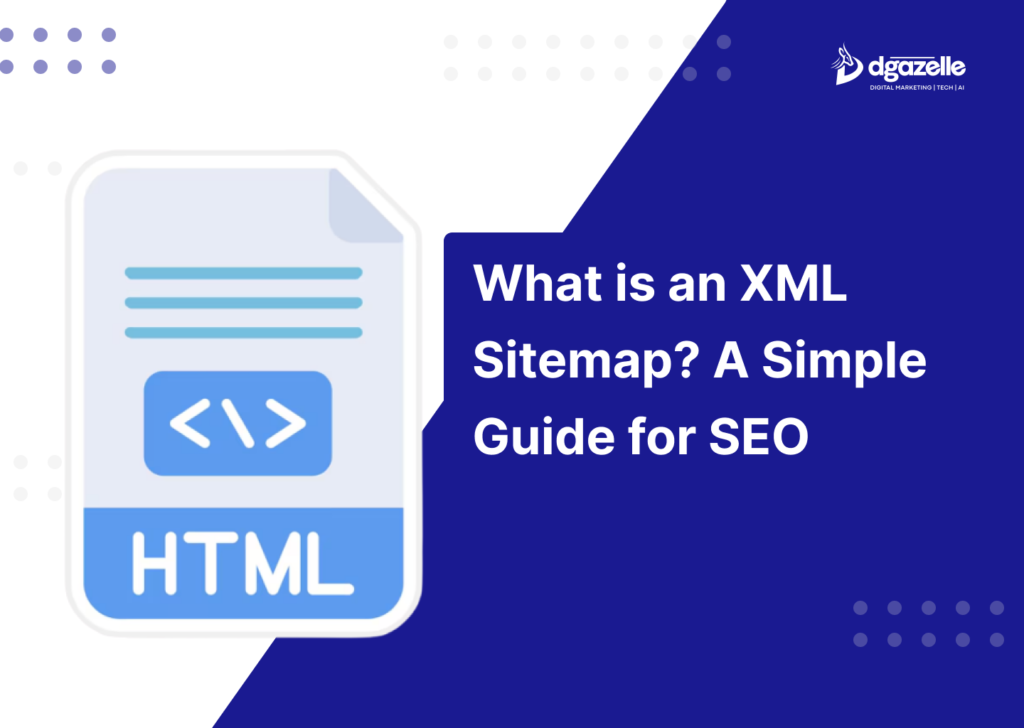
Don’t let the term “XML sitemap” scare you off just yet. Here’s the good news: while an XML sitemap falls under the “technical” side of SEO, it’s not as complicated as it sounds. In fact, creating a solid XML sitemap takes just a few clicks—no coding required! It’s free, easy, and a smart way to boost your website’s visibility on search engines like Google. Think of it as giving Google a roadmap to your website, ensuring your most important pages get found faster. Ready to get started? Let’s break it down. Here’s a refined, SEO-friendly version that keeps it engaging and subtly aligns with Nigerian business owners while incorporating a natural Dgazelle plug: What Exactly is an XML Sitemap? An XML sitemap is simply a list of a website’s URLs. Think of it as a roadmap that helps search engines navigate and understand the structure of your site. The “XML” stands for Extensible Markup Language, a format that organizes data in a way search engines can read. But why does this matter for your business website? Why Your Website Needs an XML Sitemap Search engines like Google use web crawlers to scan and index pages across the internet. While crawlers are smart, an XML sitemap makes their job easier by telling them exactly what pages exist, how often they’re updated, and which ones are most important. In short, an XML sitemap helps your website get indexed faster and rank better on search engines. Here’s what an XML sitemap does for your website: Without a sitemap, Google might take longer to discover your content—or worse, miss it entirely. Need a professionally structured website with SEO best practices baked in? Dgazelle makes it easy—so you can focus on growing your business while we handle the tech. What Are the Benefits of an XML Sitemap? If you’re wondering, “Do I really need an XML sitemap?” The short answer is—yes! And the good news? It only takes a few minutes to create, yet the benefits are huge. Here’s why an XML sitemap is a must-have for your business website: Creating and Setting Up an XML Sitemap Using Screaming Frog If you’re ready to create an XML sitemap for your website, we’ll follow a simple three-step process: 1. Create an XML Sitemap Using Screaming Frog (For Any Website) Screaming Frog is a powerful SEO tool that helps you generate an XML sitemap, no matter your website’s CMS, size, or age. With Screaming Frog, you can: After generating your XML sitemap with Screaming Frog, you need to upload it to your website. This requires FTP access to your server. If you’re familiar with FTP, simply place the file in your website’s root directory. If you’re unsure how to do this, check with a developer or hosting provider for guidance based on your CMS or server type. 2. Create an XML Sitemap Using Yoast (WordPress Only) If your website runs on WordPress, the Yoast SEO plugin simplifies sitemap creation. To use Yoast for XML sitemaps, you need: Once set up, Yoast will automatically generate and update your sitemap whenever you add or modify content. How to Submit Your XML Sitemap to Google To ensure Google indexes your website properly, submit your sitemap through Google Search Console: After submission, use the Sitemaps report to check for errors. Once done, Google will start indexing your site. Need help with your website’s SEO? At Dgazelle, we build SEO-friendly websites designed to rank higher and convert better. Let’s get your business the visibility it deserves! Contact us today. Submitting Your Sitemap to Bing and Yandex How to Submit Your Sitemap to Bing Bing may not be as dominant as Google, but it still has 900 million monthly users—making it worth your time. Here’s how to submit your sitemap: That’s it! Bing will process and index your site. How to Submit Your Sitemap to Yandex Yandex controls over 55% of Russia’s search market, making it essential for global reach. Here’s how to submit your sitemap: Yandex takes about two weeks to index sitemaps, so check back for status updates. Conclusion: Take Control of Your SEO with an XML Sitemap Many small business owners hesitate when they hear “XML sitemap”—thinking it’s too technical. But the truth? It’s quick, easy, and essential for SEO. With tools like Screaming Frog or Yoast, you can create a sitemap in under 10 minutes—even if you have no prior experience. Submitting it to search engines takes only a few more clicks. The benefits? Better indexing, improved rankings, and faster discovery of your content. If you want a hassle-free way to optimize your website for search engines, Dgazelle can handle the heavy lifting. Focus on growing your business while we take care of the technical stuff.
